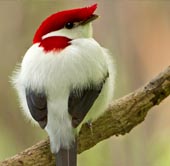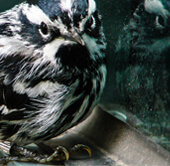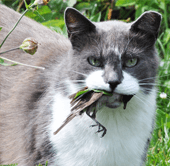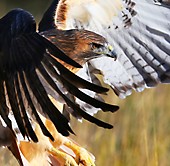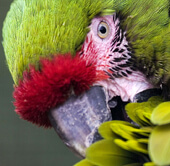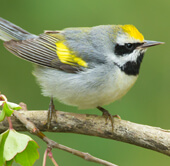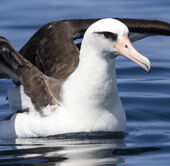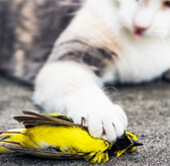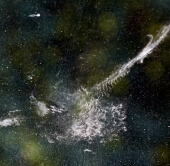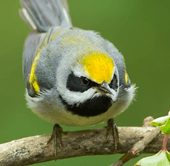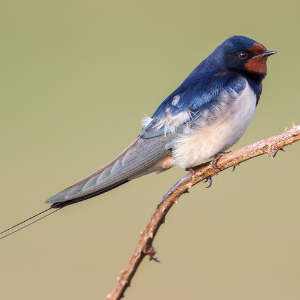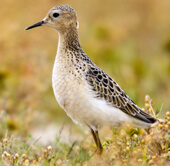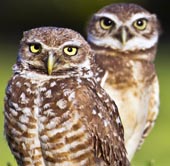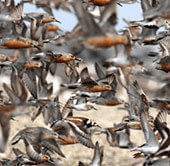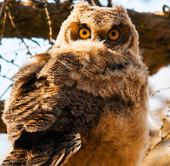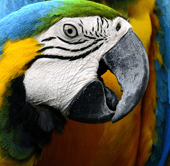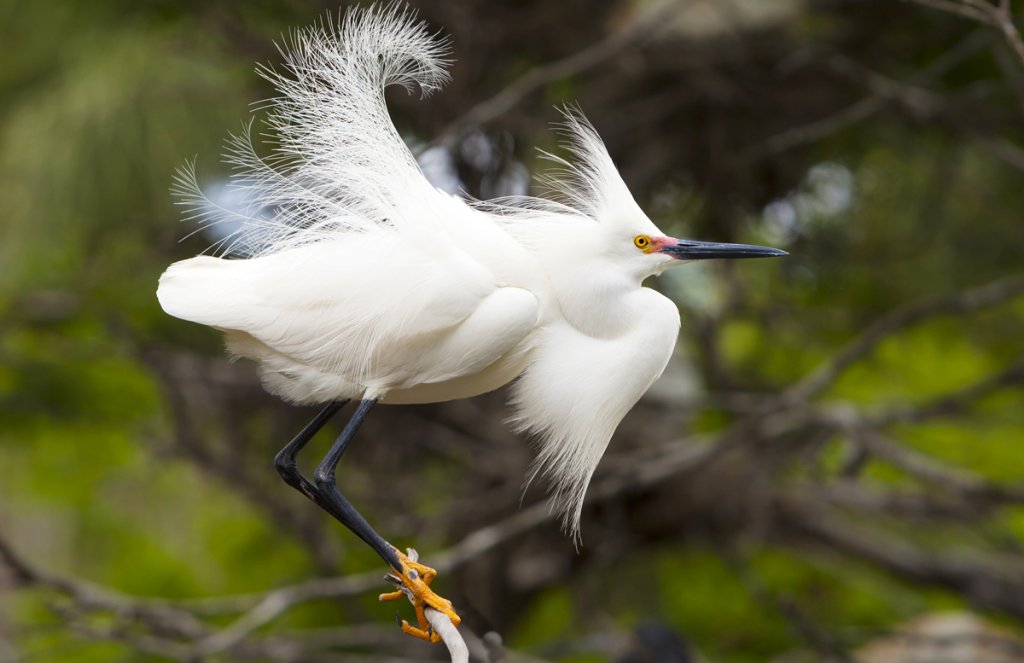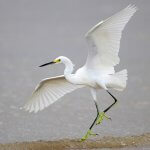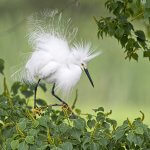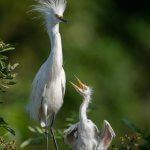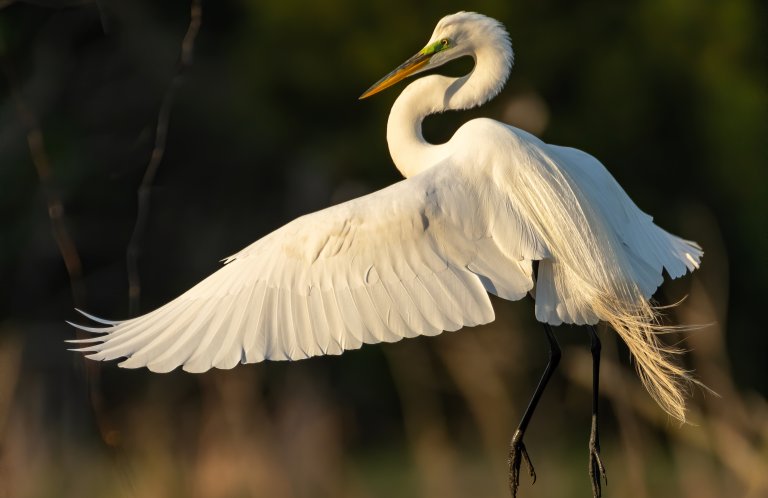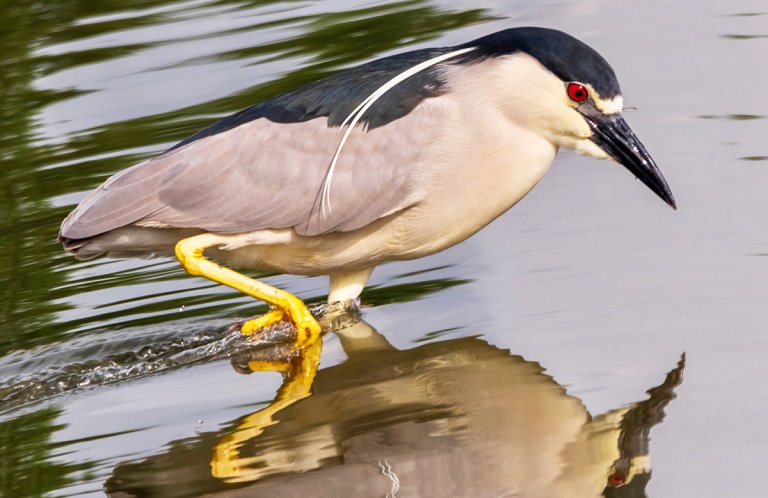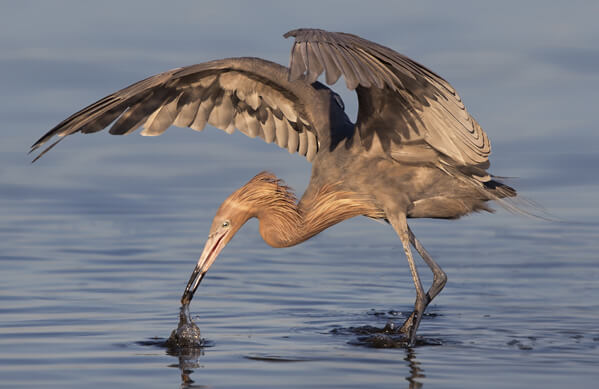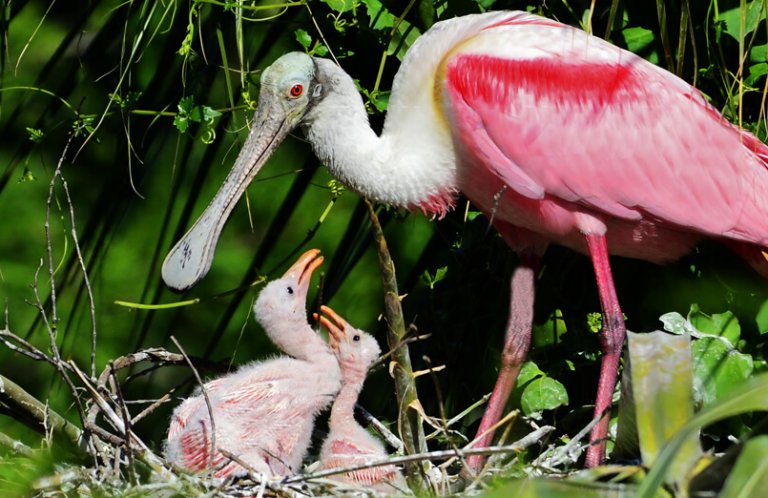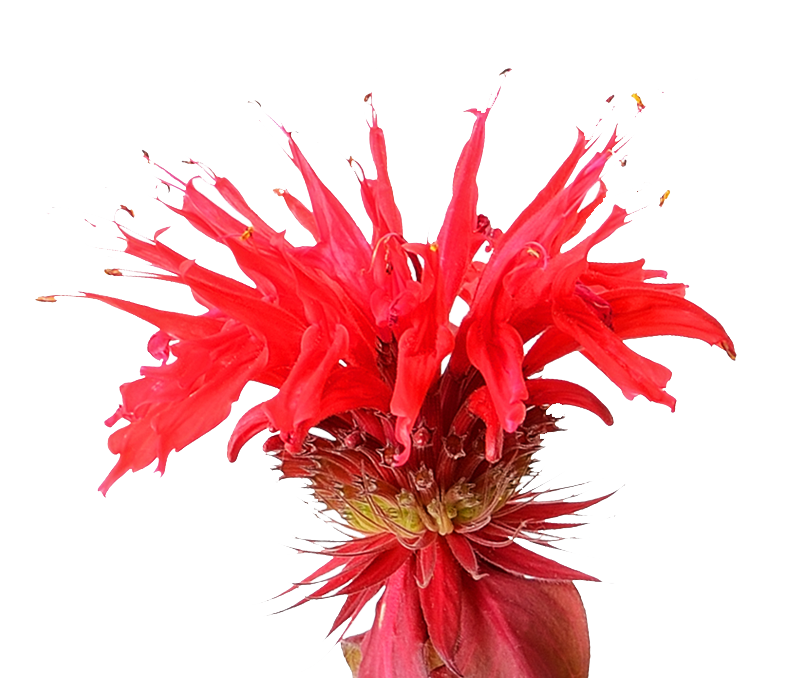About the Snowy Egret
The dainty, all-white Snowy Egret is smaller than the Great Egret, with a short crest, dagger-like black bill, and slender black legs with bright yellow feet that some birders refer to as “golden slippers.” This attractive wading bird is a common sight in wetlands throughout the Americas, where it is also known as the Snowy Heron, Little White Heron, Little White Egret, or American Egret.
The Snowy Egret is a slender, medium-sized heron with all-white plumage, a long, slender black bill, yellow lores (the area between the base of the bill and the eye), and slender black and yellow legs with bright yellow feet. Its eyes are also yellow. Males are slightly larger than females.
During the breeding season, adults develop bright reddish-orange lores and yellow-orange feet, along with long, airy-looking plumes on the head, breast, and back.
Like the Great Egret, the Snowy almost went the way of the Ivory-billed Woodpecker and Passenger Pigeon.
The Snowy Egret becomes even more beautiful in its breeding plumage, developing long, lacy plumes on its head, breast, and back (known as aigrettes) that it fans during courtship displays. Unfortunately, these airy-looking feathers were prized decorations, particularly for fashionable ladies' hats, in late 19th- and early 20th-century North America. This craze for feathers led to the slaughter of huge numbers of Snowy Egrets and other attractive wading birds such as the Roseate Spoonbill, causing catastrophic population declines.
Unrestrained plume hunting and the resulting near-extinction of many bird species led to the formation of the National Audubon Society and the creation of new bird conservation laws, including the Migratory Bird Treaty Act (1918). Once protections were in place, Snowy Egret numbers began to rebound.
Songs and Sounds
For all its beautiful looks, the Snowy Egret has a decidedly unlovely voice — a harsh, grating, rather nasal croak. This species is most vocal at its breeding colonies.
Call:
Flight Call:
Call:
Breeding and Feeding
The Snowy Egret is highly social, and nests in large groups, usually in mixed-species colonies with other herons, ibises, spoonbills, or cormorants.
Male Snowy Egrets select a site in a tree or sturdy shrub within the colony, then actively court females with a wide variety of postural displays and calls. A courting male will pump his body up and down and thrust his bill towards the sky while calling from his chosen display site, which will also serve as the nesting site.
The female Snowy Egret builds a shallow, platform nest with sticks provided by her mate. She lines the structure with reeds, rushes, and other soft vegetation. The nest is usually sited 9 to 30 feet from the ground. This species sometimes reuses old nests. Nests are occasionally parasitized by other species in the colony, such as Great Egrets, Black-crowned Night Herons, Little Blue Herons, and Western Cattle Egrets.
The female lays a clutch of two to six pale blue-green eggs, and the pair takes turns incubating for close to a month. The downy young hatch in the order they were laid; the youngest chicks are often outcompeted by their older siblings and die from starvation. Both parents feed the young by regurgitation. Young begin to leave the nest within a few weeks of hatching, but remain in the vicinity of the colony for several months.
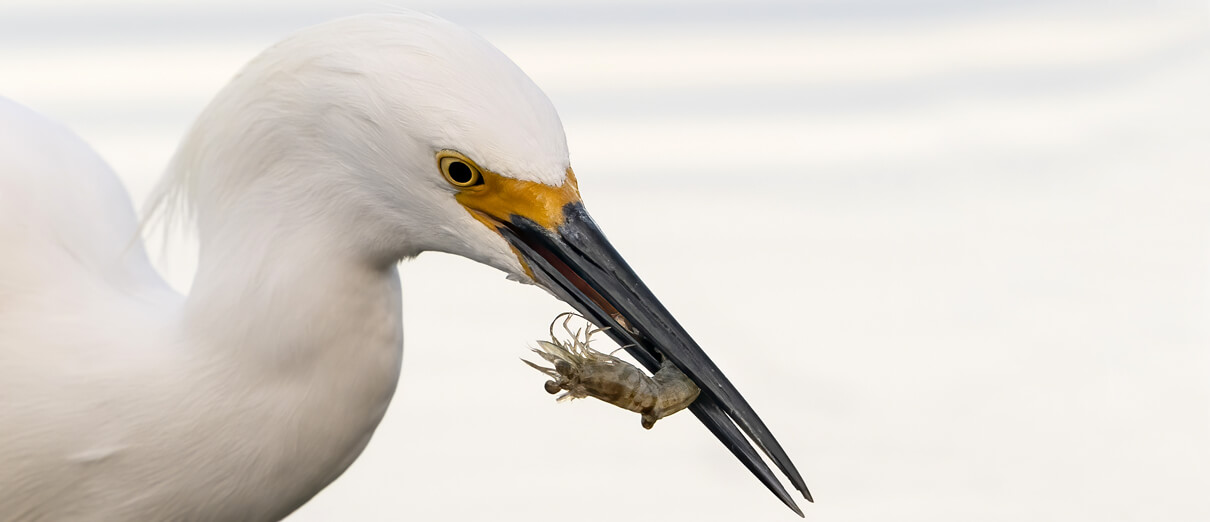
The Snowy Egret commutes from its breeding colonies to foraging sites in a wide variety of aquatic habitats, including saltmarsh pools, tidal channels/flats, freshwater swamps, ocean inlets, and lake shores. It shows a preference for brackish/marine areas with shallow water.
This species forages in large, often mixed-species groups of wading birds, using a broad repertoire of active hunting behaviors that may include running, hopping, hovering, pecking, and wing-flicking. The Snowy Egret makes use of its distinctive “golden slippers” to stir up the water at the surface or bottom sediments, attracting potential prey.
Region and Range
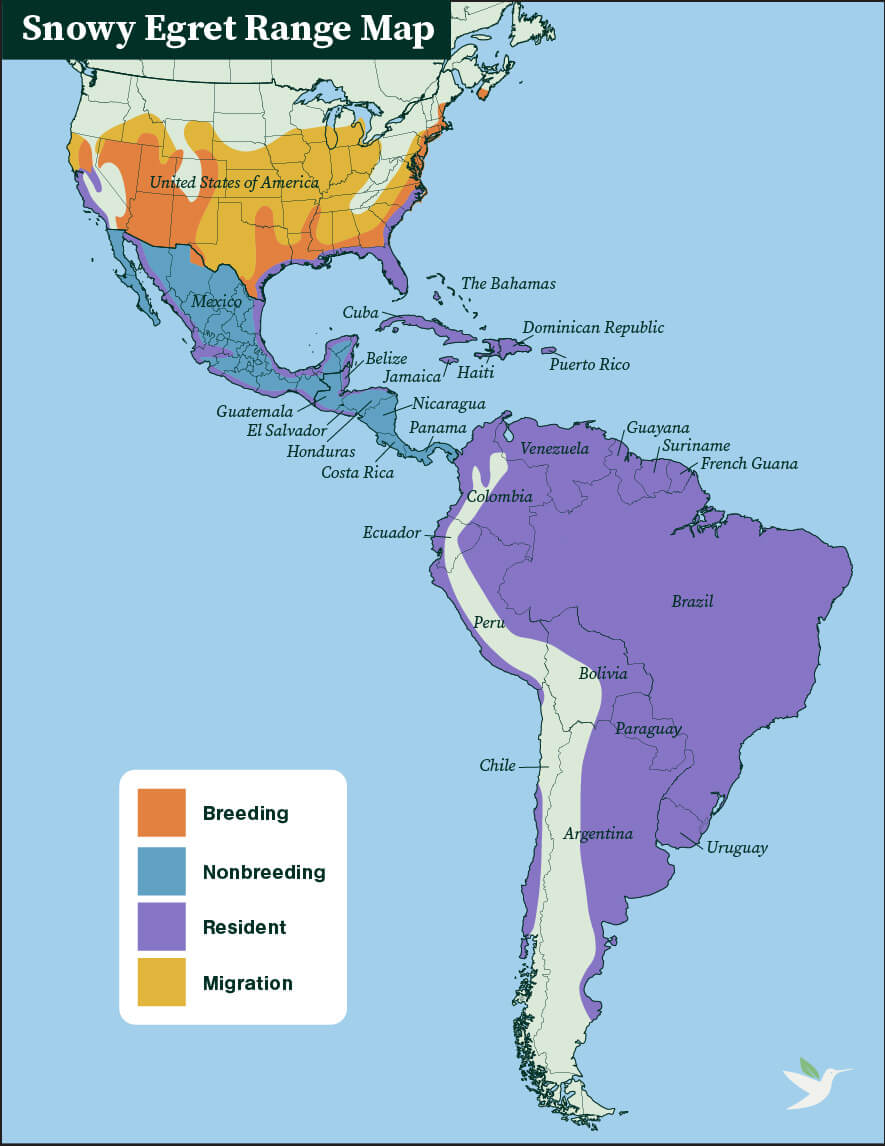
The Snowy Egret can be found in coastal and inland wetlands throughout the Americas and the Caribbean. It is common in the southeastern United States, particularly in Florida and the Gulf states. The Snowy Egret is also a common sight throughout Mexico, Central America, and South America.
Conservation
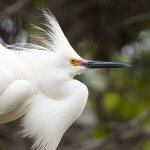
Help support ABC's conservation mission!
Wading birds like the Snowy Egret are threatened by ongoing habitat loss due to coastal development and wetland drainage, and habitat degradation resulting from pollution and sedimentation.
Pesticides can accumulate in the environment and cause harm to egrets. Oil spills may contaminate nesting, foraging, and roosting sites.
Sea level rise and changes in water quality caused by flooding, drought, and other factors can affect Snowy Egret breeding colonies.
Get Involved
Policies enacted by the U.S. Congress and federal agencies, such as the U.S. Fish and Wildlife Service, have a huge impact on migratory birds. You can help shape these rules for the better by telling lawmakers to prioritize birds, bird habitat, and bird-friendly measures. To get started, visit ABC's Action Center.
Living a bird-friendly life can have an immediate impact on migratory birds in the United States. Doing so can be as easy as adding native plants to your garden, avoiding pesticides, and keeping cats indoors. To learn more, visit our Bird-Friendly Life page.
American Bird Conservancy and our Migratory Bird Joint Venture partners have improved conservation management on more than 8.5 million acres of U.S. bird habitat — an area larger than the state of Maryland — over the last ten years. That's not all: With the help of international partners, we've established a network of more than 100 areas of priority bird habitat across the Americas, helping to ensure that birds' needs are met during all stages of their lifecycles. These are monumental undertakings, requiring the support of many, and you can help by making a gift today.

